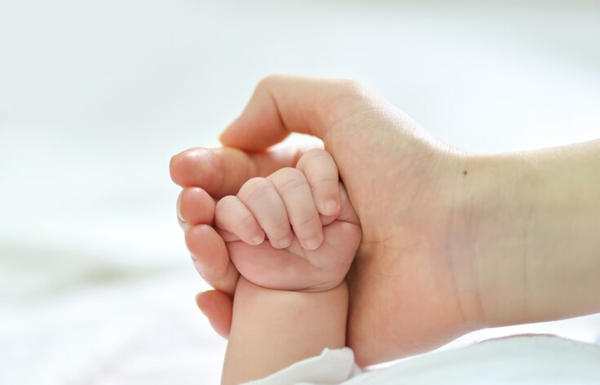Dr. Sankar Dasmahapatra
Laparoscopic Surgery Specialist in Kolkata, India
DGO, MS, Fellowship in Gynaecological Lap Surgery (Sydney -Australia)
Consultant Gynaecologist & Obstetrician
Infertility Specialist & Lapaoscopic Surgeon
DGO, MS, Fellowship in Gynaecological Lap Surgery (Sydney -Australia)
Consultant Gynaecologist & Obstetrician
Infertility Specialist & Lapaoscopic Surgeon
by Dr. Sankar Dasmahapatra

Can I conceive naturally after a hysteroscopy?
Hysteroscopy and laparoscopy are useful tools for the evaluation and treatment of various structural causes of infertility. In some cases, correction of these abnormalities alone will result in a spontaneous pregnancy.
Why is hysteroscopy done before ovulation?
If you are trying to get pregnant in the same cycle as an in-office hysteroscopy, make sure to schedule the test prior to ovulation so that there is no danger of “flushing out” a released egg or developing embryo.
Is hysteroscopy necessary before IVF?
Hysteroscopy, as we explained earlier can help detect infertility issues. Hence, most fertility clinics adopt this method of evaluation prior to an IVF, so that they can detect and remove any type of scar tissues or polyps for a better chance to conceive.
Does hysteroscopy improve implantation?
Improved success rates and pregnancy outcomes: By evaluating and addressing uterine abnormalities, hysteroscopy optimizes the uterine environment for embryo implantation. This improves the chances of successful embryo implantation, leading to higher success rates in IVF treatment.
Can hysteroscopy treat infertility?
Hysteroscopy is often used to evaluate and treat women with infertility, unusual uterine bleeding or recurrent miscarriage. Infertility physicians use diagnostic hysteroscopy to identify abnormal uterine structure, uterine fibroids, polyps and scarring.
When is the best time to have a hysteroscopy?
Although surgery for endometriosis can improve pain and fertility, the risk of disease recurrence is high.
In premenopausal women with regular menstrual cycles, the optimal timing for diagnostic hysteroscopy is during the follicular phase of the menstrual cycle after menstruation. Pregnancy should be reasonably excluded before performing hysteroscopy.
Is it easier to get pregnant after hysteroscopy?
Hysteroscopy is a diagnostic method that is also used to carry out surgeries that are possible with the hysteroscope. So, this procedure can remove fibroids, polyps, endometriosis, and adhesions. Removal of all these improve your chances of pregnancy.
Can I refuse a hysteroscopy before IVF?
A hysteroscopy before IVF treatment is a must. It won't always be recommended, but have one anyway. A hysteroscopy is the best way to check your uterus is healthy and ready to carry a baby. It can spot things an ultrasound scan can't.
Why do doctors recommend hysteroscopy?
Diagnostic hysteroscopy identifies structural irregularities in your uterus that may be causing abnormal bleeding. Hysteroscopy may also be used to confirm the results of other tests, such as an ultrasound or hysterosalpingography (HSG). HSG is an X-ray dye test used to check whether your fallopian tubes are blocked.
What happens after a hysteroscopy?
You may have cramping and vaginal bleeding for 1 or 2 days after the procedure. Report fever, severe abdominal pain, or heavy vaginal bleeding or discharge. You may have gas in the digestive tract and pains from the gas given during the procedure. This can last for about 24 hours.
Is prolapse common after laparoscopic hysterectomy?
Hysterectomy may contribute to pelvic floor weakness by changing anatomy and nerve supply. It seems to increase the risk for pelvic organ prolapse (POP), even if hysterectomy has been generally considered as a treatment for apical prolapse.
How do you fix a prolapsed bladder after a hysterectomy?
A “suspension operation” is a surgical procedure typically done through the vagina that can be performed to lift a fallen bladder. Procedures that are done through the vagina typically result in less recovery time compared to abdominal procedures.
What is laparoscopic repair of prolapse?
The goal of laparoscopic colposuspension is to resuspend the vagina and associated pelvic organs through the key-hole incisions. In certain circumstances, a simultaneous hysterectomy, bladder suspension, or rectocele repair may be required, all of which can be accomplished through a vaginal approach.
How to Prevent Prolapse After Hysterectomy
1) Moving Safely Immediately After Surgery.
2) Managing Your Body Weight.
3) Avoiding Heavy Lifting.
4) Choosing Pelvic Floor Friendly Exercises.
5) Managing Your Bowels.
6) Manage Coughing.
7) Maintaining Your Pelvic Floor Fitness.
What is a vault prolapse?
Vaginal prolapse, also known as vaginal vault prolapse, occurs when the top of the vagina weakens and collapses into the vaginal canal. In more serious cases of vaginal prolapse, the top of the vagina may bulge outside the vaginal opening.
A sacrospinous fixation is an operation designed to restore support to the uterus or vaginal vault (in a woman who has had a hysterectomy). Through a cut in the vagina, stitches are placed into a strong ligament (sacrospinous ligament) in the pelvis and then to the cervix or vaginal vault.
How do you repair a vault prolapse?
Sacrocolpopexy: A type of surgery to repair vaginal vault prolapse. The surgery attaches the vaginal vault to the sacrum with surgical mesh. Sacrohysteropexy: A type of surgery to repair uterine prolapse. The surgery attaches the cervix to the sacrum with surgical mesh.
What are the steps for sacrospinous fixation?
We divide the sacrospinous ligament fixation technique into ten surgical steps: exposure, infiltration, vaginal incision, recto-vaginal dissection, pararectal dissection, SSL suture, vaginal fixation (with vaginal strips), vaginal closure, SSF and final closure.